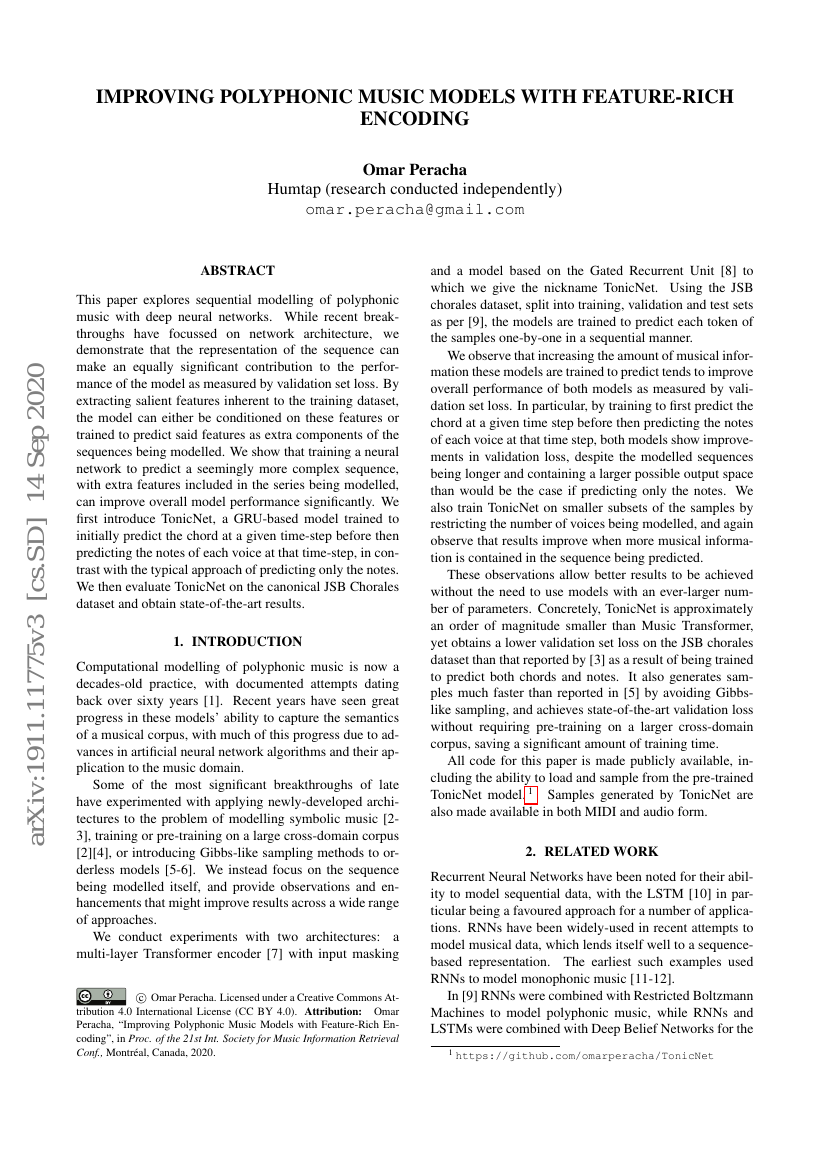Command Palette
Search for a command to run...
Omar Peracha

Abstract
This paper explores sequential modelling of polyphonic music with deep neural networks. While recent breakthroughs have focussed on network architecture, we demonstrate that the representation of the sequence can make an equally significant contribution to the performance of the model as measured by validation set loss. By extracting salient features inherent to the training dataset, the model can either be conditioned on these features or trained to predict said features as extra components of the sequences being modelled. We show that training a neural network to predict a seemingly more complex sequence, with extra features included in the series being modelled, can improve overall model performance significantly. We first introduce TonicNet, a GRU-based model trained to initially predict the chord at a given time-step before then predicting the notes of each voice at that time-step, in contrast with the typical approach of predicting only the notes. We then evaluate TonicNet on the canonical JSB Chorales dataset and obtain state-of-the-art results.
Code Repositories
Benchmarks
| Benchmark | Methodology | Metrics |
|---|---|---|
| music-modeling-on-jsb-chorales | TonicNet | NLL: 0.220 |
Build AI with AI
From idea to launch — accelerate your AI development with free AI co-coding, out-of-the-box environment and best price of GPUs.